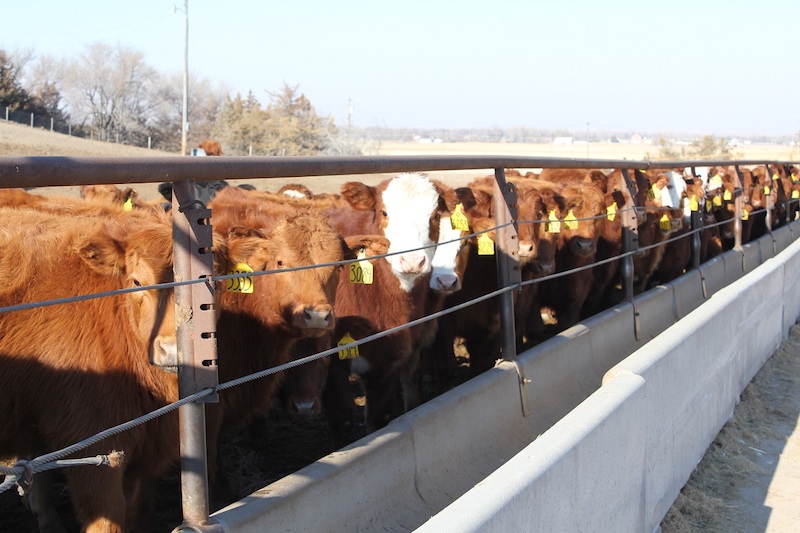Effect of Increasing Supplemental Rumen Undegradable Protein (RUP) on Performance of Calves Fed a Silage Growing Diet
February 2017

Feeding growing calves a corn silage based diet can be an economical way to background calves. However, corn silage is low in rumen undegradable protein (RUP) which is the first limiting nutrient of the young growing calf.
Therefore, these researchers fed five levels of RUP supplementation in an 85% corn silage ration to evaluate the impact of RUP supplementation on calf performance. The five levels were 0% RUP, 3.35% RUP, 6.5% RUP, 9.75% RUP, and 13% RUP.
As growing calves mature, the need for RUP decreases, therefore the performance of these calves was evaluated at an interim period, as well as at the end of the 83 day trial. The calves initially weighed 640 pounds and by the end of the experiment weighed just over 800 pounds.
No differences in dry matter intake were noted among RUP levels in the first 37 days of the experiment (Table 1). However, average daily gain and feed efficiency improved as the level increased. No differences in dry matter intake, average daily gain or efficiency were observed for days 38-83.
For the overall feeding trial, a linear improvement in gain and feed efficiency was noted. Although the metabolizable protein requirement was met at the 9.75% RUP supplement level, gain continued to increase when fed the 13% RUP supplement level suggesting either a lysine or energy response. The authors concluded more research needed to be conducted to better understand the reason behind the increased response. Producers feeding at least 9.75% RUP in high silage diets would meet the metabolizable protein needs of the animal. If economically feasible producers could feed up to 13% RUP but more extensive research should be conducted to determine if greater levels would be beneficial.
However, this research does indicate supplying a source of RUP on high silage diets will increase growing calf performance. The full report on this research can be accessed in the 2017 Nebraska Beef Cattle Report on pages 27-28.
Reference
Colton Oney, Henry Hilscher, Robert Bondurant, Andrea Watson, Galen Erickson, and Terry Klopfenstein.
Summary by:
Karla Jenkins, Nebraska Extension Cow/Calf, Range Management Specialist
University of Nebraska–Lincoln
back to Cow-calf, Bull and Heifer Nutrition and Management